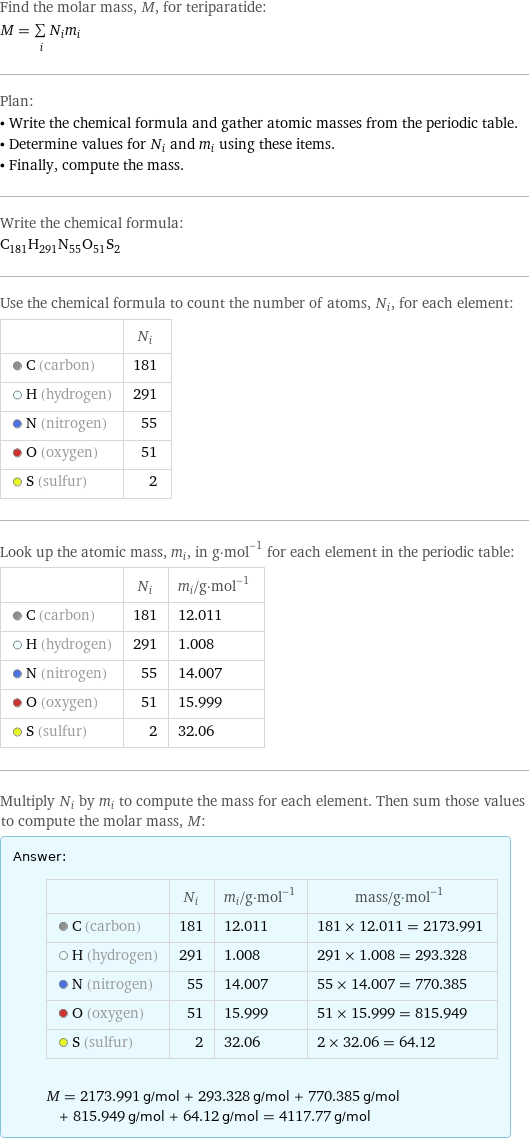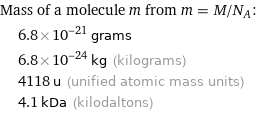Input interpretation

teriparatide | molar mass
Result

Find the molar mass, M, for teriparatide: M = sum _iN_im_i Plan: • Write the chemical formula and gather atomic masses from the periodic table. • Determine values for N_i and m_i using these items. • Finally, compute the mass. Write the chemical formula: C_181H_291N_55O_51S_2 Use the chemical formula to count the number of atoms, N_i, for each element: | N_i C (carbon) | 181 H (hydrogen) | 291 N (nitrogen) | 55 O (oxygen) | 51 S (sulfur) | 2 Look up the atomic mass, m_i, in g·mol^(-1) for each element in the periodic table: | N_i | m_i/g·mol^(-1) C (carbon) | 181 | 12.011 H (hydrogen) | 291 | 1.008 N (nitrogen) | 55 | 14.007 O (oxygen) | 51 | 15.999 S (sulfur) | 2 | 32.06 Multiply N_i by m_i to compute the mass for each element. Then sum those values to compute the molar mass, M: Answer: | | | N_i | m_i/g·mol^(-1) | mass/g·mol^(-1) C (carbon) | 181 | 12.011 | 181 × 12.011 = 2173.991 H (hydrogen) | 291 | 1.008 | 291 × 1.008 = 293.328 N (nitrogen) | 55 | 14.007 | 55 × 14.007 = 770.385 O (oxygen) | 51 | 15.999 | 51 × 15.999 = 815.949 S (sulfur) | 2 | 32.06 | 2 × 32.06 = 64.12 M = 2173.991 g/mol + 293.328 g/mol + 770.385 g/mol + 815.949 g/mol + 64.12 g/mol = 4117.77 g/mol
Unit conversion

4.1178 kg/mol (kilograms per mole)
Comparisons

≈ 5.7 × molar mass of fullerene ( ≈ 721 g/mol )

≈ 21 × molar mass of caffeine ( ≈ 194 g/mol )

≈ 70 × molar mass of sodium chloride ( ≈ 58 g/mol )
Corresponding quantities

Mass of a molecule m from m = M/N_A: | 6.8×10^-21 grams | 6.8×10^-24 kg (kilograms) | 4118 u (unified atomic mass units) | 4.1 kDa (kilodaltons)

Relative molecular mass M_r from M_r = M_u/M: | 4118